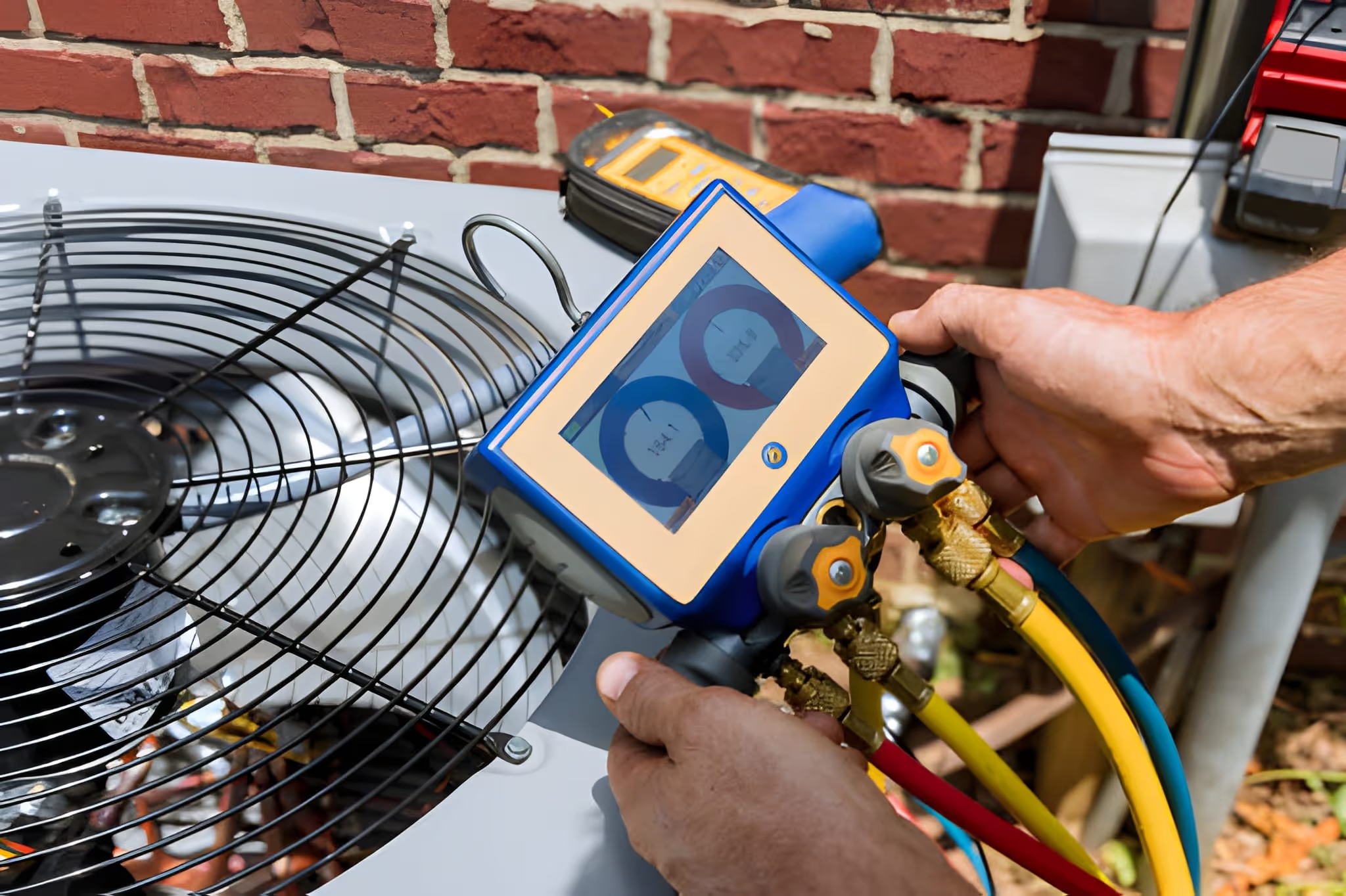AC Tune-Up in Clearwater, FL


What an AC Tune-Up Covers (Standard Checklist)
A comprehensive AC tune-up follows a consistent checklist to make sure every system component is inspected, cleaned, and adjusted for peak performance. Standard items include:
- Cleaning coils (evaporator and condenser) to improve heat transfer and prevent icing or reduced output
- Checking and, if needed, topping refrigerant to ensure correct pressure and cooling capacity (handled by certified technicians)
- Tightening electrical connections and inspecting contactors, relays, and fuses for safety and reliability
- Lubricating moving parts on motors and fans to reduce wear and noise
- Inspecting belts and pulleys for cracking, stretching, or improper tension
- Testing and calibrating the thermostat for accurate temperature control and proper cycling
- Clearing condensate drains and pans to prevent clogs, overflows, and mold growth
- Measuring airflow and static pressure to check duct and blower performance
- Verifying system start/stop cycles and safety controls to avoid short-cycling and electrical stress
Each checklist step is designed to identify small issues before they become costly breakdowns and to restore the system to its intended operating condition.
Common AC Tune-Up Issues in Clearwater, FL
Homes in Clearwater face a distinct set of AC challenges due to climate and coastal conditions:
- Salt corrosion on outdoor coils and electrical connections from coastal air, which reduces heat transfer and can cause premature component failure
- Clogged condensate lines and pan algae because high humidity promotes biological growth that blocks drainage
- Reduced cooling capacity from dirty coils and filters after long months of constant use, especially during extended warm seasons
- Refrigerant leaks accelerated by vibration and corrosion leading to low pressures and poor cooling
- Electrical wear from frequent storms and power fluctuations damaging contactors or causing loose connections
- Mold and indoor air-quality issues from moisture in ducts and evaporator areas
Recognizing these common Clearwater-specific problems helps prioritize tune-up tasks that provide the most immediate benefit.
How Technicians Diagnose During a Tune-Up
A good tune-up is both visual and diagnostic. Expect these practical checks and tests:
- System performance baseline: measure supply and return temperatures to calculate temperature split (target ~15-20°F for many systems)
- Refrigerant pressure check: compare measured pressures with manufacturer specifications to detect leaks or undercharge
- Electrical load testing: check compressor and fan motor amperage to ensure safe operating currents
- Airflow measurement: assess blower output and duct restrictions to diagnose underperformance
- Thermostat verification: confirm setpoint accuracy and proper placement relative to heat sources
- Safety device tests: ensure float switches, high-pressure cutouts, and condensate sensors operate correctly
Technicians will explain diagnostic findings in plain terms and identify which repairs or adjustments will most improve reliability and comfort.
Expected Performance and Efficiency Improvements
A routine tune-up can produce noticeable, measurable results. Typical benefits include:
- Improved cooling performance — restored airflow and clean coils often return indoor comfort to design conditions
- Better energy efficiency — addressing dirty coils, low refrigerant, and electrical inefficiencies can reduce energy use; many systems see efficiency improvements in the range of 5-15% after a proper tune-up, depending on system age and condition
- Fewer breakdowns — identifying worn parts and tightening electrical connections reduces the likelihood of mid-season failures
- Longer equipment life — routine lubrication and cleaning reduce wear, slowing component degradation
Actual gains depend on the initial condition of the system. Older or neglected units may require repairs or component replacement to reach optimal efficiency.
Recommended Scheduling for Clearwater Homes
Timing matters in Clearwater’s climate:
- Annual spring tune-up (March–April) is ideal to prepare your system before peak cooling demand. Early spring service ensures repaired issues are resolved before high-use months.
- Consider semi-annual checks for homes near the coast or properties with heavy use, as salt air and continuous operation accelerate wear. A spring HVAC check plus a late-summer inspection can catch seasonal problems.
- Post-storm inspection after hurricanes or severe storms is wise because power surges and debris can damage outdoor units and controls.
Scheduling maintenance proactively reduces emergency repairs during the hottest weeks.
Before and After Performance Testing
A professional tune-up should include measurable before-and-after tests so you can see the value of the service:
- Temperature split (supply vs. return) to show restored cooling delta
- Suction and discharge pressures to confirm correct refrigerant charge or identify leaks
- Motor amperage and voltage to demonstrate improved electrical stability
- Airflow measurements or static pressure readings to show improved circulation
- Thermostat calibration readout to verify accurate controls
These test results help document system condition and can guide decisions about repairs or replacements.
Practical Maintenance Tips for Clearwater Homeowners
Keep your system healthy between professional visits with these simple steps:
- Replace or clean filters every 1-3 months during heavy use to protect coils and maintain airflow
- Keep the outdoor unit clear of debris, grass clippings, and salt buildup; rinse gently with fresh water if salt spray is evident
- Ensure vents and registers are unobstructed and balanced room-to-room for even comfort
- Monitor for unusual noises, odors, or increased runtime — early detection saves money
- Consider a condensate line flush twice a year in humid climates to prevent clogs
A routine AC tune-up in Clearwater, FL, is a practical investment in comfort, efficiency, and system longevity. Given the region’s humidity, extended cooling season, and coastal conditions, timely maintenance is especially important to prevent corrosion, drainage problems, and premature failure. A thorough tune-up combines cleaning, electrical checks, refrigerant validation, lubrication, and before/after testing to restore performance and provide measurable results tailored to your home’s needs.
Service Areas


